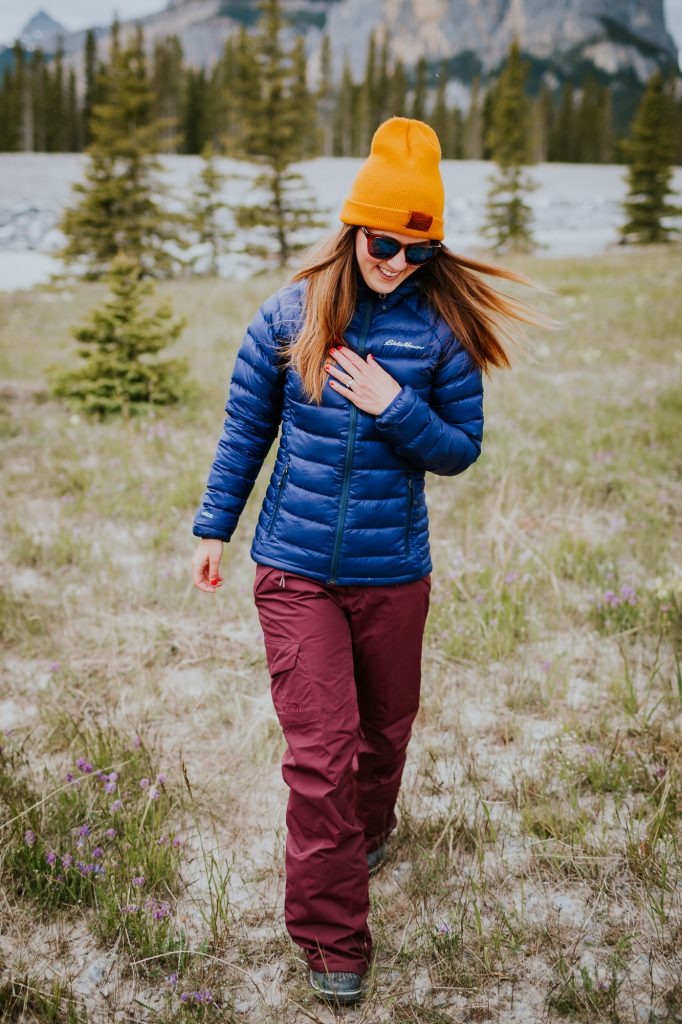Prior to our winter road trip to Tuktoyaktuk, Northwest Territories, we had never been to the Arctic. We really had no idea what would keep us warm in a polar climate in the winter. It was all a bit of a guess, so we used what we knew about living in the Canadian Rockies and about layering clothing for warmth, and went from there. We hope this post will provide you with some basic knowledge about keeping warm in cold winter climates, and encourage you to get out there and explore… even if the weather isn’t ideal.
Disclosure: This post contains affiliate links. If you click through and make a purchase, we’ll earn a commission, at no additional cost to you.
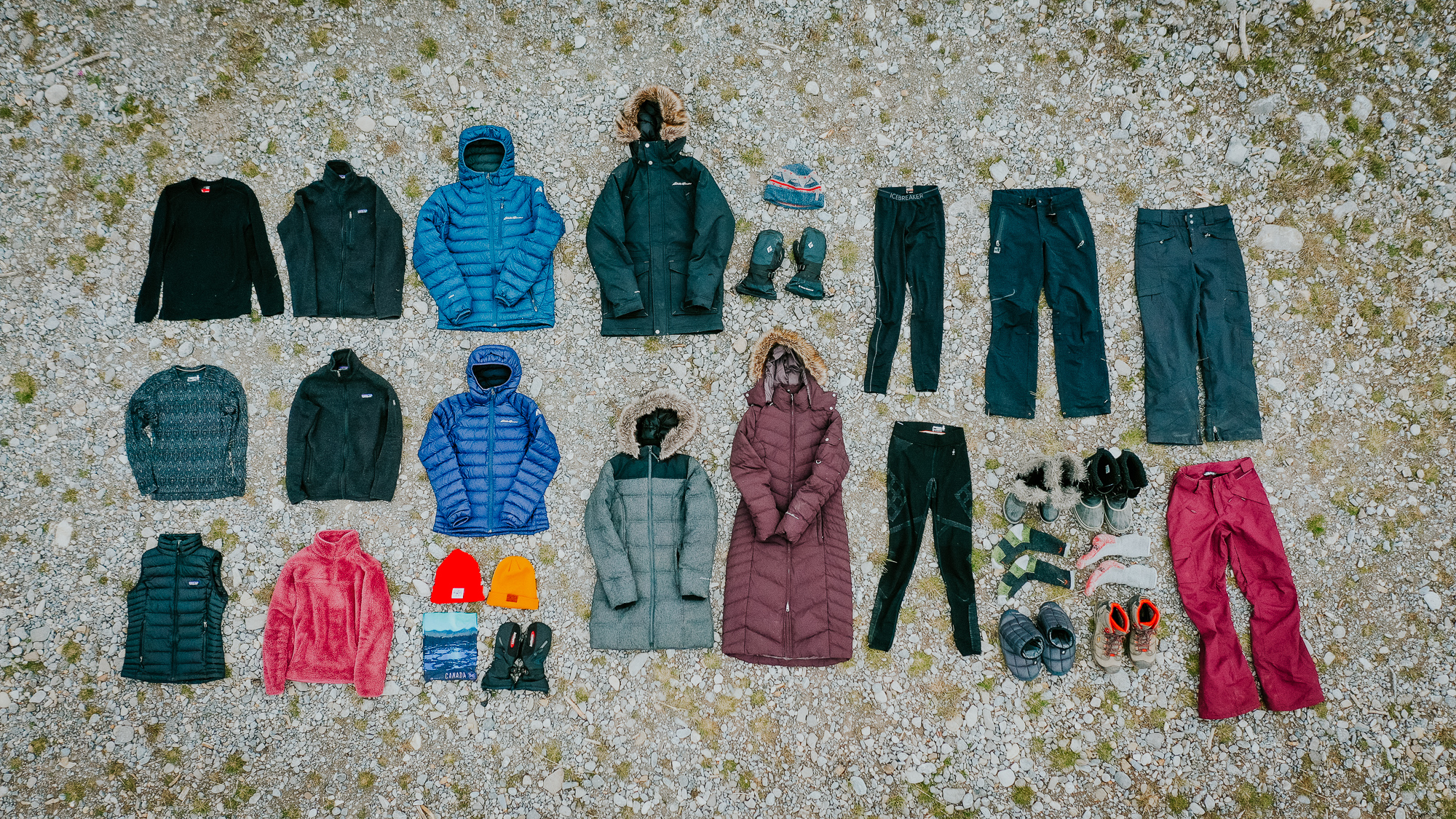
Start With a Good Quality Base Layer
Ideally, your base layer is meant to wick sweat and to keep you warm. Good quality base layers can be expensive, but the beauty is you can utilize them in nearly every activity you do. We’ve found that splurging isn’t a bad thing here, as our base layers have stood the test of time. We opted for Merino wool long-sleeved tops and bottoms.
I (Ashley) literally lived in these Smartwool tops and bottoms for our entire trip up north. When we camped, I slept in them. I wore them nearly every day, all day. The top fits great and the pattern is cute, much more interesting than a plain black layer. This is my go-to pair of wool socks for the wintertime. I also packed a pair of my fuzzy reading socks from Indigo (no joke) and was really surprised at how warm they kept my feet.
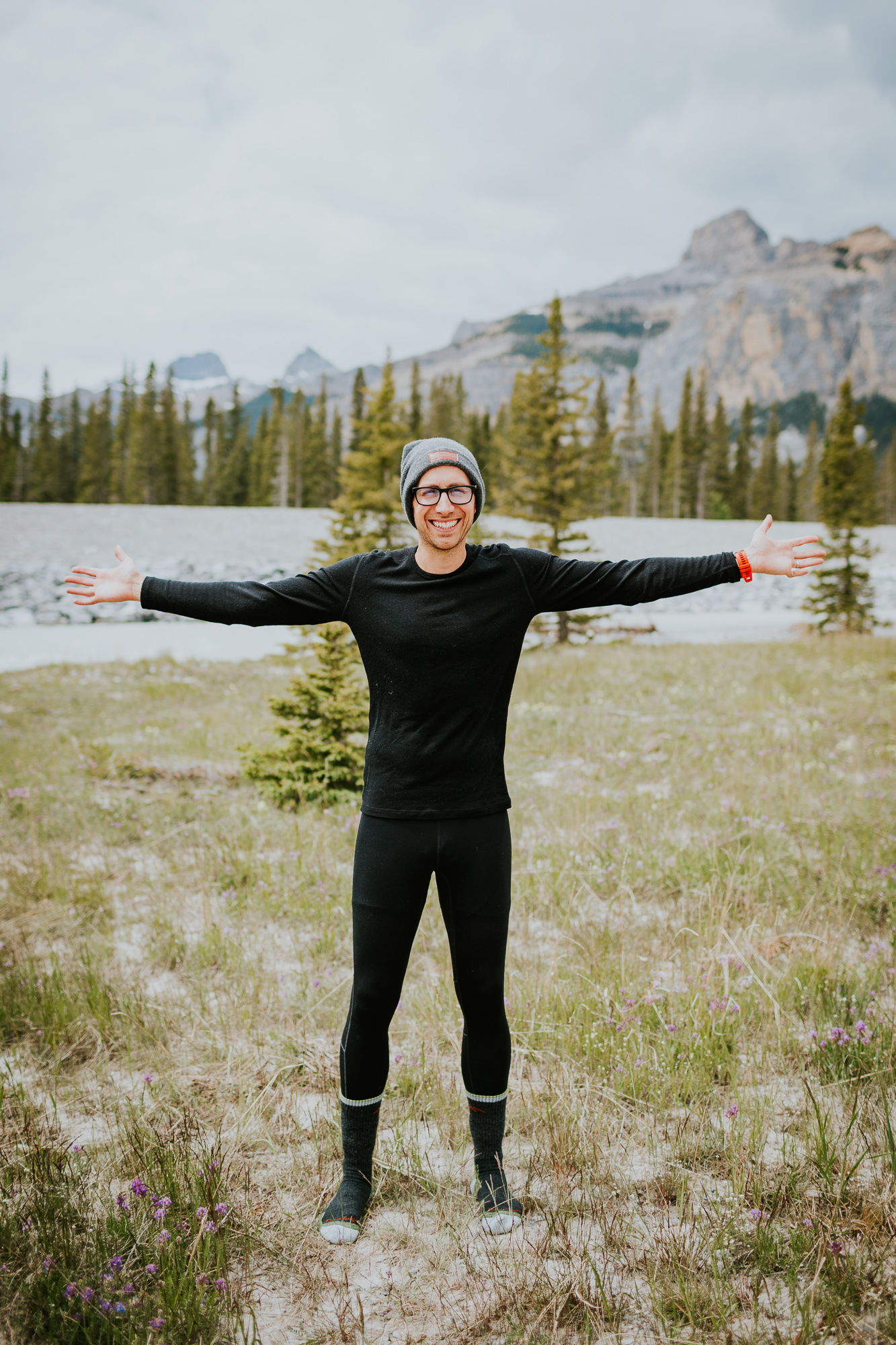
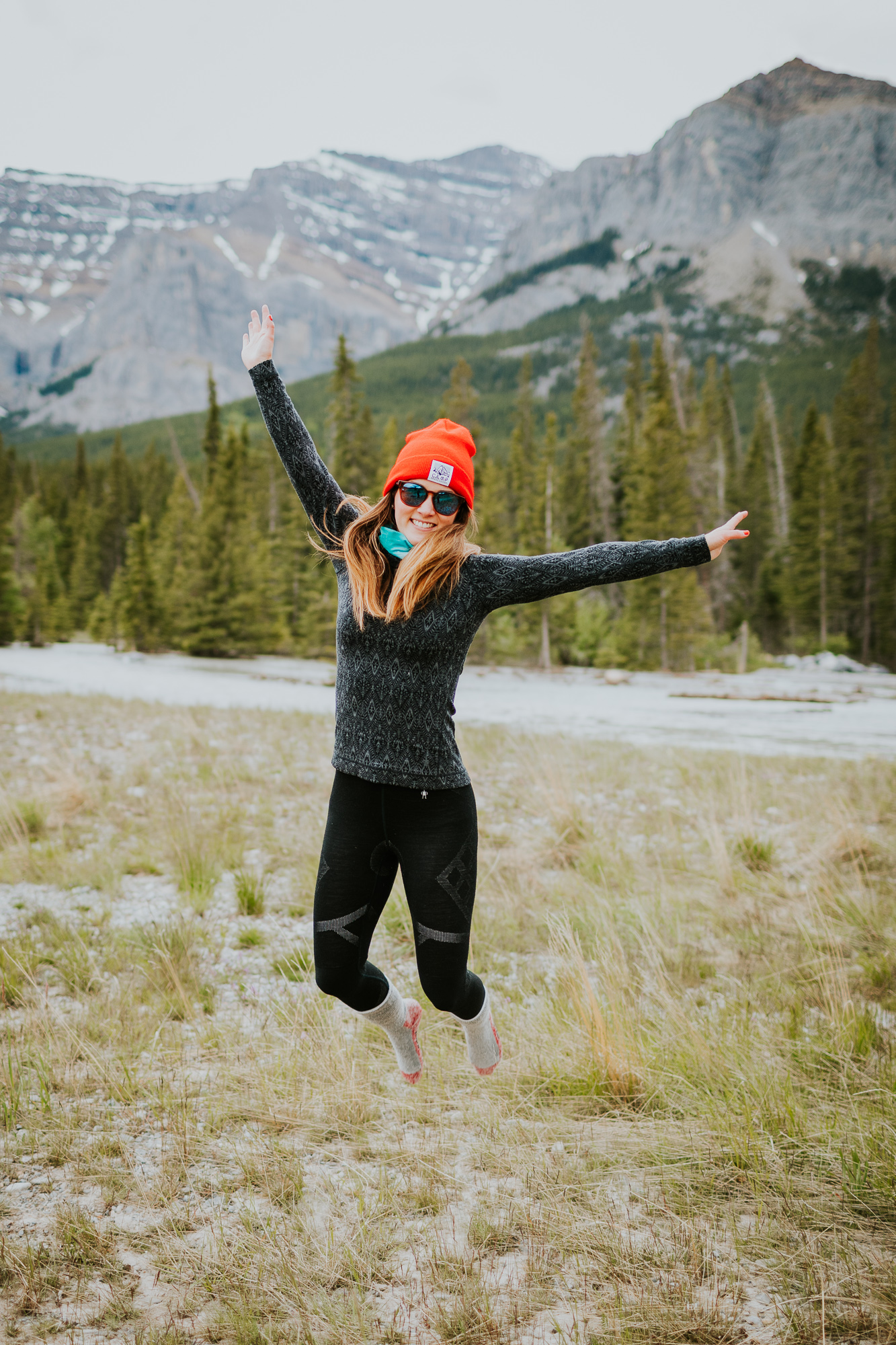
Get Cozy With A Middle Layer
The purpose of a middle layer is to insulate, helping you retain body heat and protect you from the cold. We were very happy with Patagonia’s Better Sweater full zip-up fleeces and I also wore Eddie Bauer’s Quest Plush Fleece 1/4-Zip pullover for a mid-layer. On the bottom, Richard wore medium weight hiking pants (similar to MEC Highpoint Pants) and I alternated between lightweight hiking pants (Indygena Maeto II Woven Stretch Pant), sweatpants and snow pants depending on the weather conditions. I would recommend medium weight hiking pants here, I just couldn’t find a pair that I liked the fit of so utilized what was in my wardrobe already.

On Richard
Men’s Patagonia Better Sweater | MEC Pants | Keen Targhee Boots | Outdoor Research Ukee Beanie
Stay Warm With an Insulated Middle Layer
Insulated middle layers are great for hiking or lounging. Down is highly compressible for easy packing and offers more warmth for its weight than any other insulating material. The efficiency of down is measured in fill power—from 450 to 900. Because down is always inside a shell material, down jackets also offer some water and wind resistance. We lived in these jackets for 90% of the trip to the Arctic. They were light and comfortable enough when in the truck, but also kept us warm in temperatures down to -10C with moderate activity.
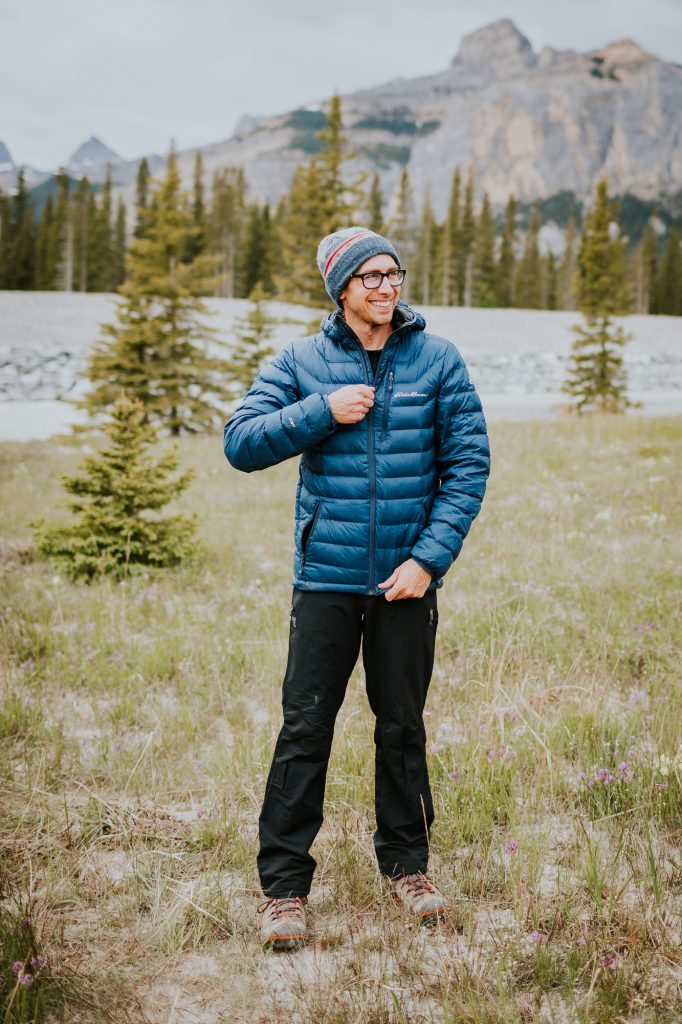
On Richard:
Eddie Bauer Downlight Hooded Jacket | MEC Pants | Outdoor Research Ukee Beanie | Keen Targhee Boots
Heavy Insulated Layer/Outer Layer
Normally, a waterproof shell is a great outer layer option, but in the Arctic something little more insulated was necessary. For extreme cold, the outer layer needs to be windproof and heavily insulated. It doesn’t necessarily have to be waterproof since precipitation doesn’t fall at temperatures well below 0C. Synthetic materials work well, but natural down is arguably the most effective.
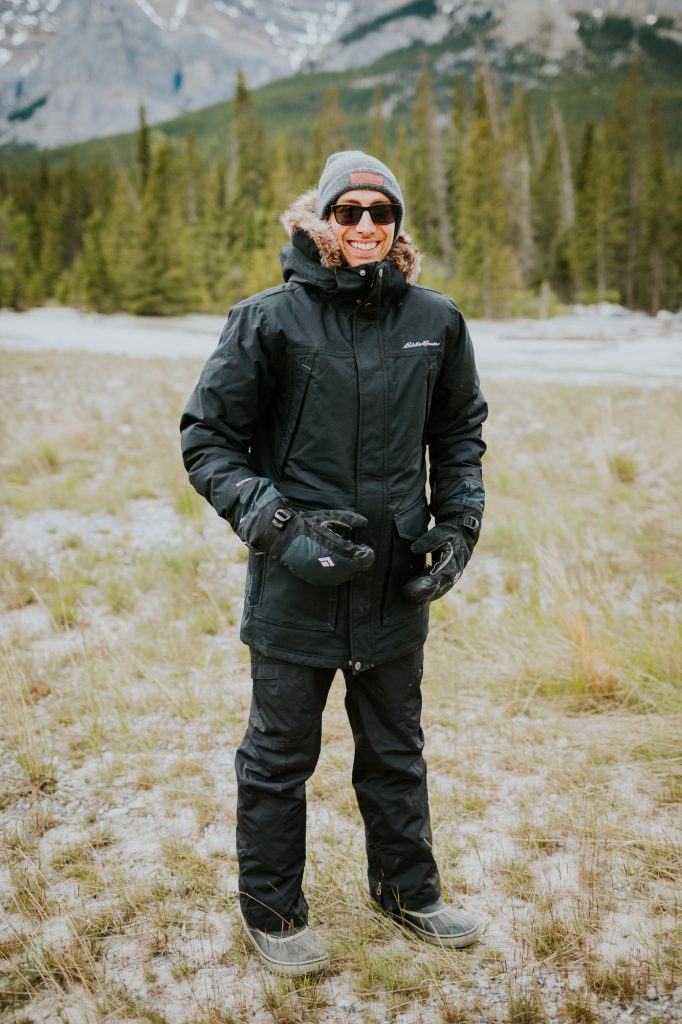
On Richard:
Black Diamond Gloves | Eddie Bauer Superior Down Parka | Snow Pants (From the back of the closet) | Prescription Sunglasses | XOverland Beanie

On Ashley:
Black Diamond Gloves | Eddie Bauer Sun Valley Jacket | North Face Snow Pants | Sorel Boots | Zeal Sunglasses
A Word About Boots…
So, we need to talk about boots. In our experience, our Sorel boots were an epic fail. Richard has the Men’s 1964 Pac T- Boot and I have a pair of the Women’s Tofino II Boot. They didn’t keep our feet warm, period. These boots were our go-to’s for our first trip to Whitehorse in the winter and for daily winter wear in Canmore and, unfortunately, we were never happy with them. We’ll be eager to test out a different pair down the road… if you have any recommendations, let us know!
On the other hand, we picked up a pair of RAB Hut Boots for wearing inside the camper, and I ended up wearing them nearly everywhere! Inside the cab on long driving days, inside the AT Habitat, in my parent’s house when we returned from the Arctic. They were glorious. I tend towards cold feet and these kept my toes nice and toasty.
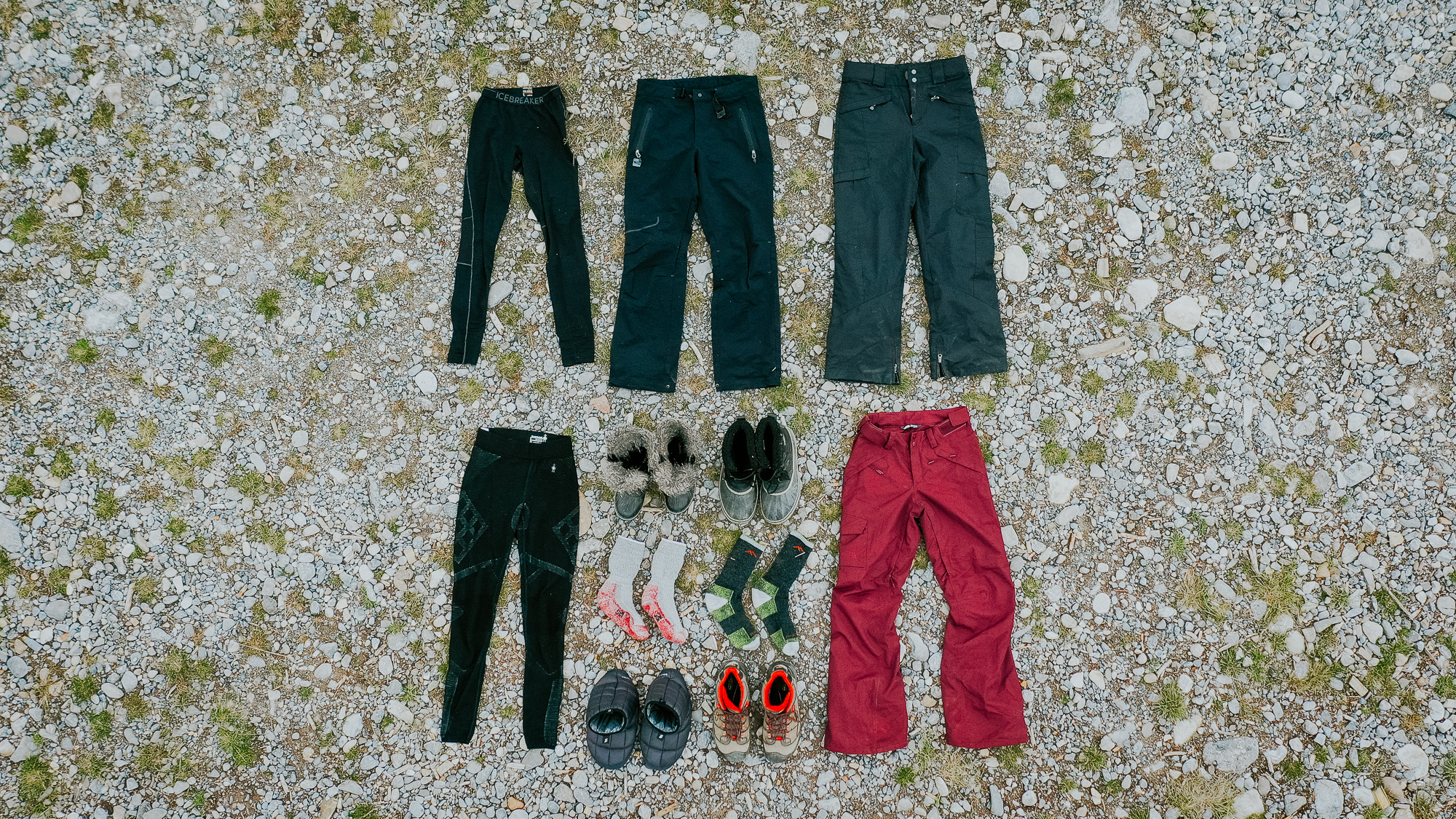
Overall, we were really happy with the gear we brought up north. The biggest takeaways were sticking to what we know about layering to maintain warmth, and making sure you have a great pair of boots. Plus, if you are heading to a cold weather destination, the members of the local indigenous community might just have some hand-made traditional clothing items available for purchase. Unfortunately due to the COVID-19 outbreak we didn’t have the chance to learn more about mukluks, moccasins, fur-lined parkas and mitts in Inuvik or Tuktoyaktuk. If you are in the area, be sure to visit the Inuvialuit Regional Corporation Craft Store in Inuvik and the Tuktoyaktuk Souvenir Store. In addition, the Northwest Territories arts website has a list detailing where to buy arts and crafts throughout the province.
Now we want to hear from you! Do you have any favourite clothing items or tips and tricks to keeping warm in cold weather? Let us know in the comments below.


